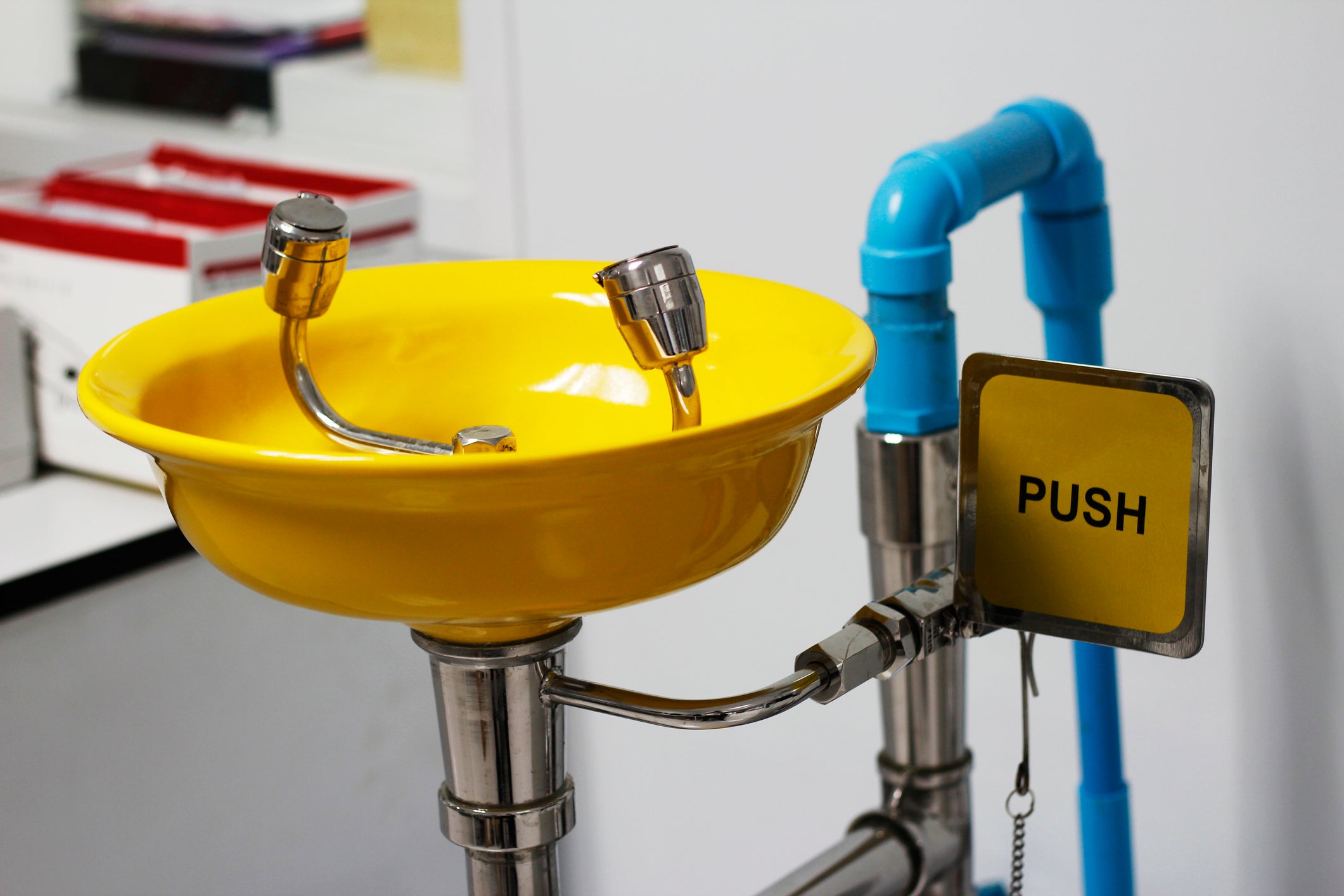In workplaces where hazardous substances are present, the risk of eye injuries is significant. An Eyewash Station – Complete Station serves as a critical safety measure, providing immediate decontamination to prevent serious eye damage. This comprehensive guide explores the features, regulatory requirements, types, and best practices associated with complete eyewash stations.
Understanding Complete Eyewash Stations
A complete eyewash station is a self-contained unit designed to deliver a controlled flow of flushing fluid to the eyes. These stations are essential in environments where employees are exposed to injurious corrosive materials, as they provide immediate relief and reduce the severity of eye injuries.
Key Components
- Flushing Nozzles: Designed to provide a gentle flow of fluid to both eyes simultaneously.
- Activation Mechanism: Hands-free operation activated by a push handle or foot pedal.
- Flushing Fluid: Typically sterile saline solution or potable water maintained at a tepid temperature (60–100°F).
- Protective Covers: Dust covers to prevent contamination of the nozzles.
- Signage: Highly visible signs indicating the location of the station.
Regulatory Compliance
Compliance with safety standards is crucial for the effectiveness of eyewash stations. The Occupational Safety and Health Administration (OSHA) mandates that suitable facilities for quick drenching or flushing of the eyes be provided where employees are exposed to injurious corrosive materials (29 CFR 1910.151(c)).
The American National Standards Institute (ANSI) standard Z358.1-2014 outlines specific requirements:
- Accessibility: Stations must be located within 10 seconds (approximately 55 feet) from the hazard, on the same level, and free from obstructions.
- Flow Rate: Eyewash stations must deliver a minimum of 0.4 gallons per minute (1.5 liters per minute) for 15 minutes.
- Water Temperature: Flushing fluid should be tepid, between 60–100°F (16–38°C).
- Hands-Free Operation: Once activated, the station must remain operational without the use of hands.
- Maintenance: Regular weekly activation and annual inspections are required to ensure proper functioning.
Types of Eyewash Stations
1. Plumbed Eyewash Stations
Connected to a continuous water supply, these stations are ideal for permanent installations in laboratories and industrial settings.
2. Portable Eyewash Stations
Self-contained units that are suitable for locations without a permanent water supply. They are essential for remote or temporary worksites.
3. Combination Units
These units integrate both an eyewash station and a safety shower, providing comprehensive decontamination for both eyes and body.
Best Practices for Installation and Maintenance
Installation Guidelines
- Ensure the station is within 10 seconds of potential hazards.
- Install on the same level as the hazard, with a clear path free of obstructions.
- Position in a well-lit area with clear signage.
- Protect against freezing conditions if applicable.
Maintenance Protocols
- Activate plumbed stations weekly to verify proper operation and clear any sediment.
- Inspect and replace flushing fluids in portable units according to manufacturer guidelines.
- Conduct annual inspections to ensure compliance with ANSI standards.
- Train employees on the location and proper use of eyewash stations.
Conclusion
Implementing a comprehensive eyewash station is vital for workplace safety in environments with hazardous materials. By adhering to regulatory standards and maintaining the equipment properly, employers can ensure immediate and effective response to eye injuries, thereby safeguarding employee health and complying with safety regulations.

